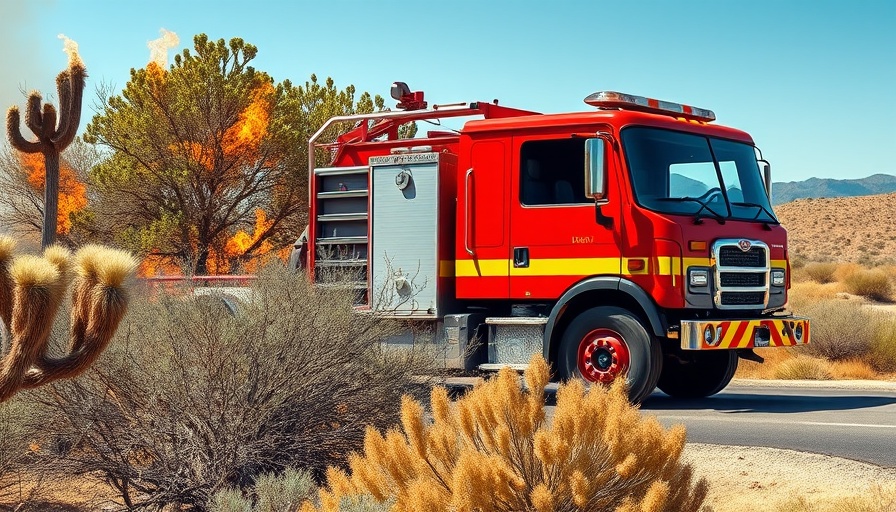
Understanding the Cortaro Fire Incident: What Happened?
On May 24, 2025, the Cortaro Fire ignited along the Santa Cruz River bed near Tucson, Arizona, rapidly engulfing approximately 100 acres of brush. Emergency services received reports of multiple brush fires merging into a single blaze, prompting a swift response from the Pima County Sheriff’s Department and other emergency agencies. By midday, crews had established containment lines, effectively controlling the fire by mid-afternoon. This incident highlights ongoing concerns related to wildfire management and the implications of climate change.
Why Brush Fires Are a Growing Concern
Brush fires like the Cortaro Fire have been increasingly common due to a combination of factors, including prolonged drought conditions and erratic weather patterns linked to climate change. According to studies from the U.S. Forest Service, about 85% of wildfires in the United States are caused by human activity, emphasizing the need for comprehensive public awareness campaigns aimed at fire prevention. As the frequency of wildfires in America rises, understanding their causes becomes crucial for communities vulnerable to flames.
Emergency Response: Lessons from the Cortaro Fire
One of the notable aspects of the Cortaro Fire was the coordinated response from local agencies. The swift action by about 40 personnel significantly mitigated the fire's spread, demonstrating effective crisis management. This incident serves as a case study for future protocol adjustments in wildfire response strategies, emphasizing the need for up-to-date training and resources for emergency responders, as well as community preparedness initiatives.
The Broader Implications of Wildfire Awareness
The effects of wildfires extend beyond immediate physical damage. They pose risks to air quality, wildlife habitats, and local economies. Communities need to recognize that while firefighting efforts are vital, long-term solutions must also be embraced. This includes enhancing urban planning strategies to incorporate fire-resistant landscapes and adopting policy changes that prioritize environmental resilience.
Community Impact: Human Dimensions of the Cortaro Fire
The recent fire led to temporary closures in the area, including the Wheeler Taft Abbett Sr. Library and Crossroads Park, impacting locals. Disruptions to daily life can create a sense of unease in communities, stressing the importance of emergency communication systems that keep residents informed. Understanding how residents respond to such emergencies, and the psychological effects of not only fires but their resulting evacuations emphasizes the need for stronger community ties.
Future Predictions: Navigating the Fire Season Ahead
As we look ahead, the National Interagency Fire Center projects an increase in the length and intensity of wildfire seasons. This trend necessitates broader conversations about climate change policies and community preparedness. Local governments might need to enhance funding for fire services, invest in better infrastructure, and consider environmental restoration projects to improve overall fire resilience.
The Cortaro Fire serves as a stark reminder of the changing environment and the vigilance required from both government entities and the public. Keeping informed through local news updates and participating in community preparedness programs can make a significant difference in managing both fears and flames.
 Add Element
Add Element  Add Row
Add Row 



 Add Row
Add Row  Add
Add 


Write A Comment